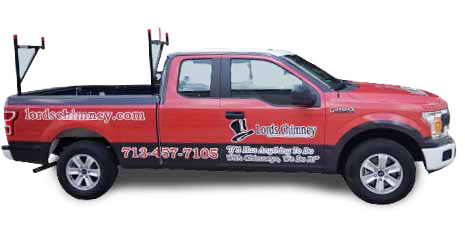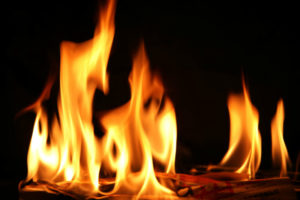Fireplace Don’ts: How Not To Use Your Fireplace
There are any number of great ways to use your chimney…pushing back the darkness of lengthening nights, easing into morning with a crackling fire and cup of coffee, settling the ambiance for an evening with friends – just to name a few. But before you add a log to the fireplace and light things up, let’s take a moment to acknowledge there are also some ways not to use a fireplace. Thankfully, by keeping a few key “don’ts” in mind, you can fully enjoy all those delightful (and safe) fireplace uses.
Need to book chimney services with our experts? Give us a call or book online today.

1. DON’T Use the Wrong Fuel
Be sure to use only the fuel your fireplace unit was designed to burn. If your unit is wood-burning? Then wood is your friend – but remember that not every type of wood is fireplace-friendly. Never burn treated or painted wood of any kind. The products used to treat wood aren’t intended to be burned, and especially not in a living space. They can release harmful chemicals.
And no matter the type of fireplace you have, garbage is never an option for fuel. It may seem harmless to toss in cardboard boxes, junk mail, or something else you want to dispose of, but some of these items will release a lot of smoke – and potentially toxic fumes, as well. They can also burn unpredictably, getting very hot very quickly, or send floating pieces of burning matter up your chimney.
Another item to avoid? Accelerants. Products such as lighter fluid may add ease to fire-starting, but they are not designed for fireplaces. They can burn hot enough to cause damage, and are more challenging to control than the safer option – kindling.
What you should burn in a wood fireplace is seasoned firewood. Wood that’s newly cut or damp won’t burn efficiently, and the smoke it releases can condense as creosote that accumulates on your interior chimney walls. Since creosote is highly combustible, you really don’t want it there! Seasoned firewood is simply wood that’s been dried to an appropriate level of moisture to burn hot and clean – making for a safer, more pleasant fireside experience.
2. DON’T Overstuff the Firebox
If you put too many logs into your fireplace, it can restrict airflow to your fire. The result? Poor combustion and smoke that could become a very unwelcome – and potentially lingering – house guest. Worst case scenario, a piece of firewood could roll out of an overstuffed firebox mid-burn.
Instead, neatly stack an appropriate amount of firewood to allow for proper ventilation, and feed your fire steadily to keep it at a level you like.
3. DON’T Keep Your Chimney Sweep Technician at a Distance
Did you know that the self-cleaning oven was invented in 1963? If only everything in our homes could be self-cleaning! Unfortunately, your chimney needs some hands-on sweeping services – and not just to keep it tidy. Ignoring this type of maintenance can leave creosote buildup, debris, and other obstructions in place. These can cause chimney fires and impact ventilation, so don’t let the dark corners of your chimney get overlooked!
You should also get professional eyes on your chimney annually for a chimney inspection. This is an investment that pays itself off in several ways: preserving the soundness and safe function of your chimney, ensuring efficient operation, and potentially avoiding costly repairs associated with deterioration.
Simply put, having routine inspections and sweepings is an essential practice for keeping your system safer, functional, and efficient for the years ahead. Our CSIA certified technicians provide outstanding service and always bring the same level of professionalism and care to any job, big or small.
4. DON’T Set Up Camp Too Close
The glow of the fire is lovely, but should be enjoyed from a reasonable distance. All combustible items such as furniture, books, garlands, curtains, and decor should be at least three feet away from your fireplace. These items could easily catch fire if they meet a wayward spark or are exposed to excessive heat.
Speaking of sparks, don’t neglect your fireplace screen. Not only can fireplace screens be a nice addition to a room’s decor, they do a good job acting as a guard against sparks or embers coming into contact with items you don’t want them to.
5. DON’T Leave the Fire Alone
I know, we just said not to get too close…but don’t go too far either! If a fire is going, there should always be an adult capable of tending it in the room too. Before going out or turning in, make sure that your fire is safely out.
6. DON’T Neglect the Smoke Detectors
You hope they’ll never need to go off, but you’ll be so thankful they do if the need ever arises. Make sure your home is protected with thoughtfully placed smoke and carbon monoxide detectors. Check the batteries as a matter of routine, and replace them often as recommended by the manufacturer.
Do Enjoy Your Fireplace for All It’s Worth
Fireplaces open up a whole new world of comfort. We’re dedicated to helping you enjoy that comfort as safely and fully as possible. Don’t let misuse cause damage to your fireplace or home – but don’t let misgivings keep you from using it, either! If you have questions or concerns about best fireplace practices, reach out. We’d be happy to help meet your fireplace needs.


 Lighting a fire in your fireplace can be a struggle if you have little experience building them. If you find yourself settled in for a cozy evening and want to enhance the atmosphere with a warm fire, then try out the top-down method for a long-lasting, low maintenance burn.
Lighting a fire in your fireplace can be a struggle if you have little experience building them. If you find yourself settled in for a cozy evening and want to enhance the atmosphere with a warm fire, then try out the top-down method for a long-lasting, low maintenance burn.